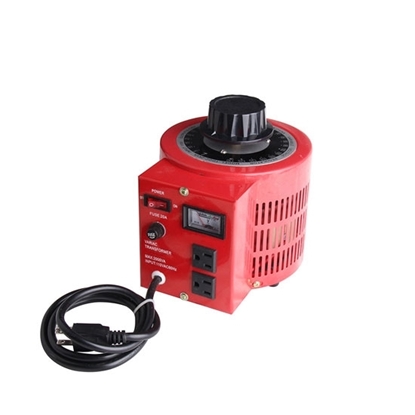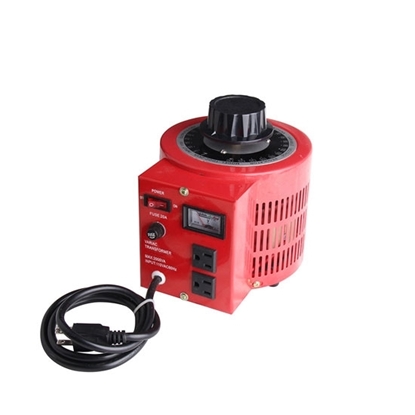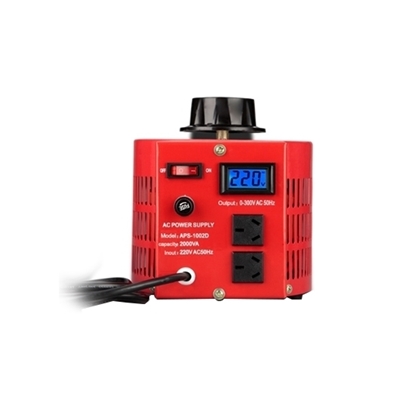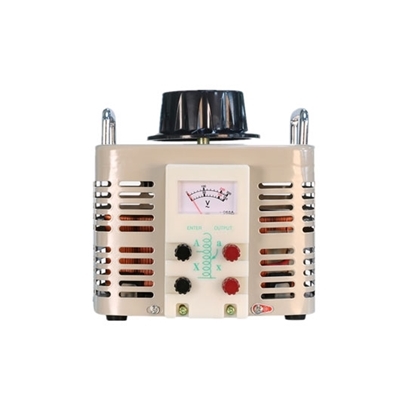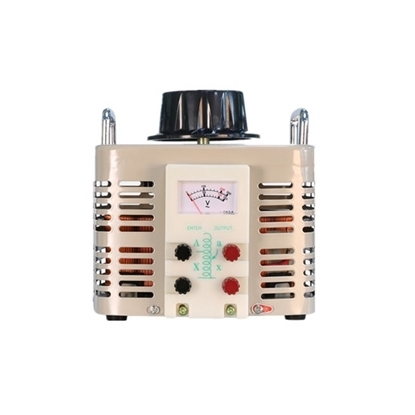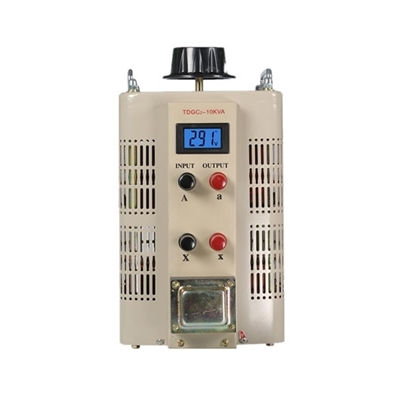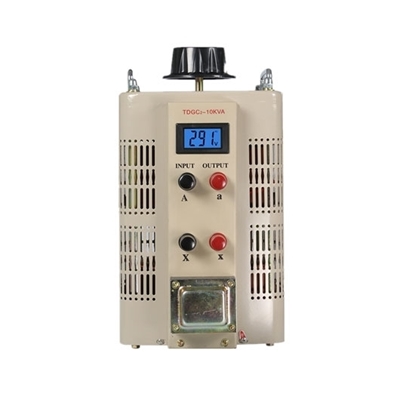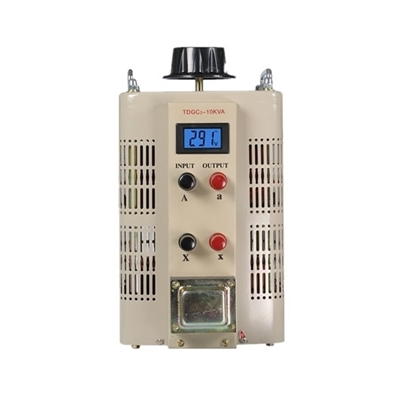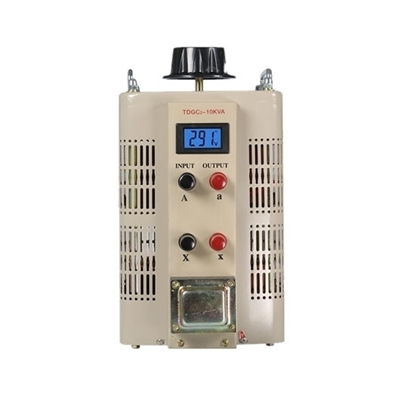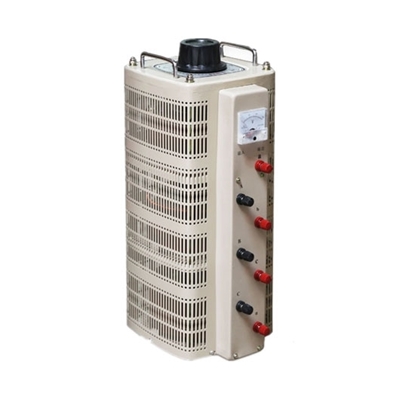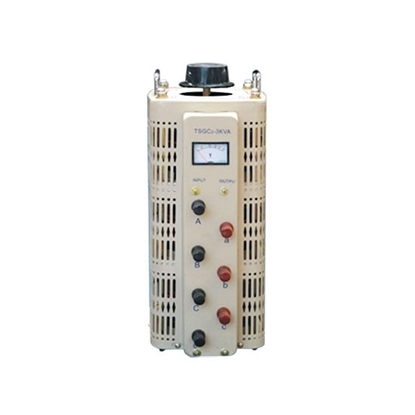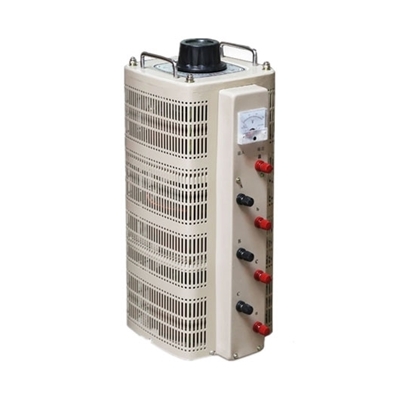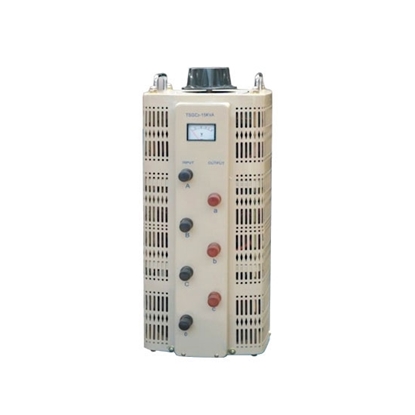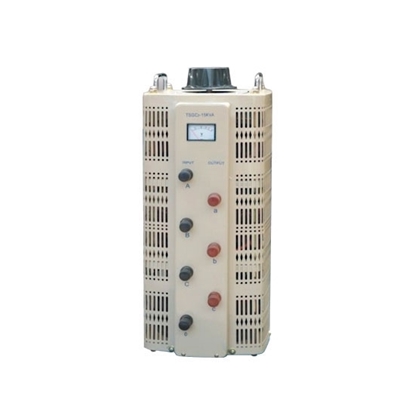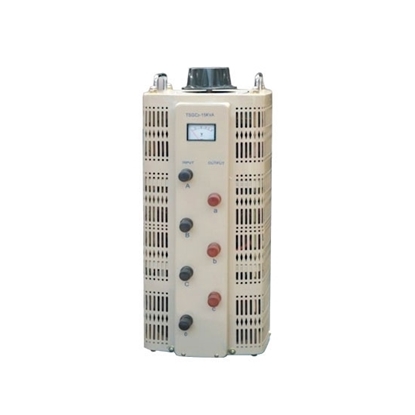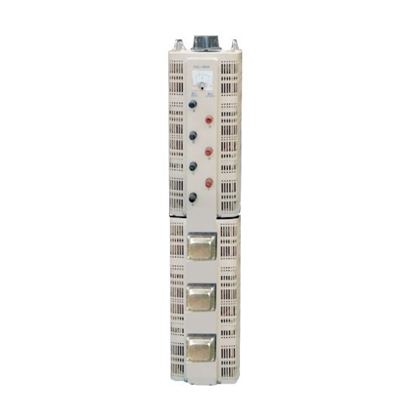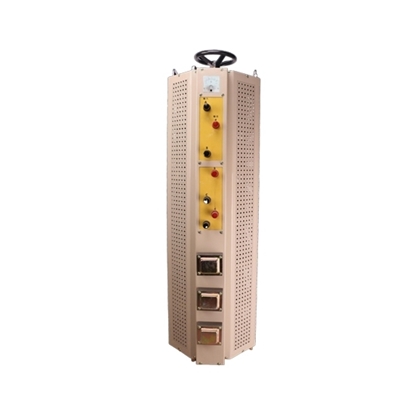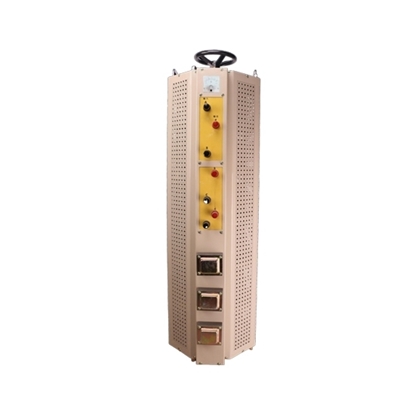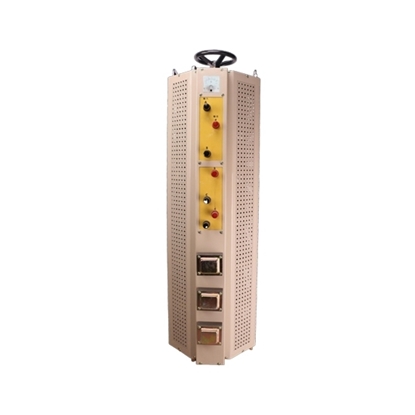Variac Voltage Regulators
0.5 kVA Single Phase Variac Voltage Regulator
1 kVA Single Phase Variac Voltage Regulator
2 kVA Single Phase Variac Voltage Regulator
3 kVA Single Phase Variac Voltage Regulator
5 kVA Single Phase Variac Voltage Regulator
10 kVA Single Phase Variac Voltage Regulator
15 kVA Single Phase Variac Voltage Regulator
20 kVA Single Phase Variac Voltage Regulator
30 kVA Single Phase Variac Voltage Regulator
1.5 kVA 3 Phase Variac Voltage Regulator
3 kVA 3 Phase Variac Transformer
6 kVA 3 Phase Variac Voltage Regulator
9 kVA 3 Phase Variac Transformer
15 kVA 3 Phase Variac Transformer
20 kVA 3 Phase Variac Transformer
30 kVA 3 Phase Variac Transformer
40 kVA 3 Phase Variac Transformer
50 kVA 3 Phase Variac Transformer
60 kVA 3 Phase Variac Transformer
Variable transformers prices is as shown on the website. ATO offers single phase, 3 phase 0.5 kVA, 1 kVA, 3 kVA, 5 kVA, 10 kVA to 30 kVA variable transformers, 110V or 220V, 50Hz/60Hz.
ATO Variac Voltage Regulator has the advantages of low loss, high efficiency, small magnetic leakage, low noise, strong instantaneous overload capability, and no waveform distortion. Variac voltage regulator is an ideal choice for scientific research, testing, aging and other equipment.
Variac transformer working principle
The variac transformer is a relatively low power autotransformer designed to regulate the AC power supplied to the load from a single-phase or three-phase AC grid . Like other transformers, it has a core made of electrical steel. However, on the toroidal core, unlike other types of transformers, there is only one winding (primary), part of which can act as a secondary and the number of turns of the secondary winding can be quickly adjusted by the user, which is the difference between adjustable autotransformers and simple autotransformers.
To adjust the number of turns of each secondary winding, the variac transformer is designed with a knob connected to a sliding carbon brush. When the knob is turned, the brushes slide along the windings one turn at a time, thus adjusting the ratio.
The secondary terminals of the variac voltage regulator are connected directly to the sliding brushes. The secondary output is shared with the input. The load terminal is connected to the output of the adjustable autotransformer and its input is connected to a single-phase or three-phase power supply. In a single-phase adjustable autotransformer, there is one core and one winding, and in a three-phase, there are three cores, each with one winding.
The output voltage of a Variac transformer can be greater or less than the input, for example, adjustable from 0 to 250 volts for a single-phase network and from 0 to 450 volts for a three-phase network. It is worth noting that the higher its efficiency, the closer the output voltage is to the input voltage, up to 99%. The output voltage is in the form of a sine wave.
On the front panel of the Variac transformer there is a voltmeter for the secondary circuit, which is used for operational control of overloads and for more accurate setting of the output voltage. The housing has vents through which the magnetic circuit and windings can be cooled by natural air.
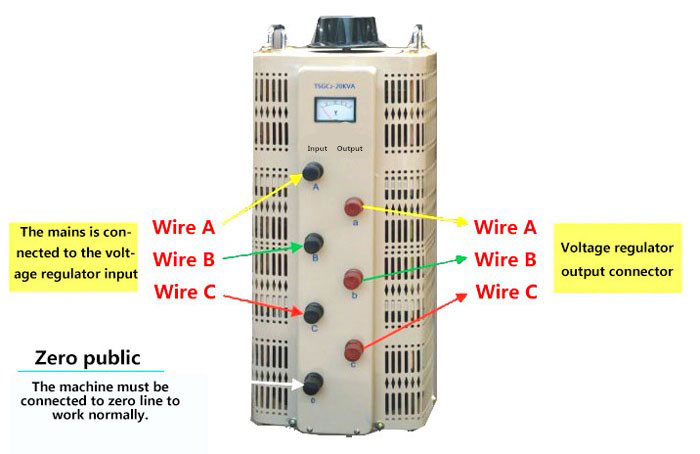
Variable transformer features
- Using vacuum adjustment switch, the voltage adjustment sensitivity and output stability.
- When the grid voltage fluctuations, in order to provide high quality and stable voltage, the transformer must be time to time voltage adjustment.
- Integrated design of the regulator transformer, compact structure, small footprint, easy to install.
- Tap changer distribution automatic controller, convenient for on-site remote control, can be used for the need to provide computer interface.
- Tap changer adopts dry vacuum box structure, consisting of motorized mechanism, vacuum diverter switch with transition resistance and tap selector.
Variac transformer applications
Due to the unstable power supply and the accompanying strong voltage surges, the current indicators in the grid need to be corrected. In general, 10-15 V is considered a normal deviation and most modern electrical equipment is designed for such deviations, so they are hardly noticed. If the voltage in a single-phase network rises to 260-270 V, it may cause malfunctions in household appliances, tools and equipment that are working at the time.
It is possible to get rid of this situation by adjusting the voltage with Variac transforme. The only difference is that the first option is suitable for use on grids where jumps are constantly occurring, i.e. the voltage drops sharply, increases and then normalizes again. The voltage regulator will adapt to these changes by providing only 220 V to the load. As for the Variac transforme, it has no such function, because it is not designed for automatic parameter changes. When used, the output voltage will vary in proportion to the voltage variations in the grid. That is, with a voltage of 180 V, using an autotransformer, it can go up to 220V, but as soon as it jumps to 220V, the connected load will be subjected to a voltage of 260 V, which may damage the electricity-using equipment. Therefore, in the case of frequent fluctuations of the mains, it is better to use a voltage regulator.
If there is a need to specifically reduce the voltage in the network, for example by connecting electrical equipment designed for 110 V, it is unlikely that the regulator will provide such indicators, because in most cases they operate in the range 135 to 250 V or from 150 to 290 V. Variac transforme is able to work in a wider range of applications as follows.
- For testing highly sensitive medical and industrial equipment.
- To build complex radio electronics.
- For repairing other electrical equipment in automobiles.
- For charging the batteries of vehicles and equipment.
- For powering devices and equipment with non-standard voltages.
How to choose a variac transformer?
Power
You can choose an adjustable autotransformer with a power of 0.45 to 10 W (or even more), but first you need to calculate the total load of all connected appliances. Their total power should not exceed the power of the autotransformer.
Voltage regulation range
This depends on the way the device behaves, decreasing or increasing the voltage parameters. Most of the models are of step-down type, especially single-phase models, which can operate from 0 to 250 V or from 160 to 220 V. Choose the one with the appropriate range, depending on the voltage required for the operation of the device. For three-phase models, the range is even wider: the lower limit can be at the level of 200-220 V. It is not always necessary to have a laboratory autotransformer with a wide operating range; for example, if the voltage in the grid drops to 180 V (not too high, not too low), it is possible to purchase a transformer that is adjustable in the 180-220 V range.
Supply voltage
If the device is intended to be connected to a single-phase network, then you need to buy a model with 220 V, and if connected to a three-phase network 380 V (at the same time, for such models, the adjustment range can go far beyond the nominal value of the three-phase network, for example, from 0 to 430 V).
Safety tips for using variac transformer
- The original and vice side cannot be connected wrongly, otherwise the transformer will be burned.
- There are three inputs for 220V and 110V power supply, do not connect them wrongly, otherwise the transformer will be burnt.
- Before the power is turned on, turn the handle to zero. Before connecting the power supply, gradually mobilize the handle to adjust the required output voltage.
How to maintain the variable transformer?
- When moving the voltage regulator should not use the hand wheel, but should lift the hand or the whole product to move.
- When using the output current should always be careful not to exceed the rated value, otherwise it is easy to make the three-phase regulator life reduced, or even burned.
- Coil and brush contact surface, should often be kept clean, otherwise easy to increase the spark and burn the coil surface. If you find the coil surface burned black spots, available cotton yarn with alcohol to wipe away, until the surface spots removed.
- Should often check the use of voltage regulator, such as brush wear too much, defective, should be promptly replaced by the same specifications of the brush loss, and zero sandpaper pad in the brush under the hand wheel several times, so that the brush bottom surface smoothing, good contact, before use.
- Variac transformer needs to be installed horizontally on a large panel or stand mounted on other bases can use the three-phase regulator base mounting holes to be fixed 10, three-phase regulator often protect the clean does not allow water droplets, oil, etc. fall into the three-phase regulator inside, three-phase regulator must be regularly blacked out to remove the internal accumulation of dust.
- Supply voltage should be consistent with the regulator nameplate input voltage.

